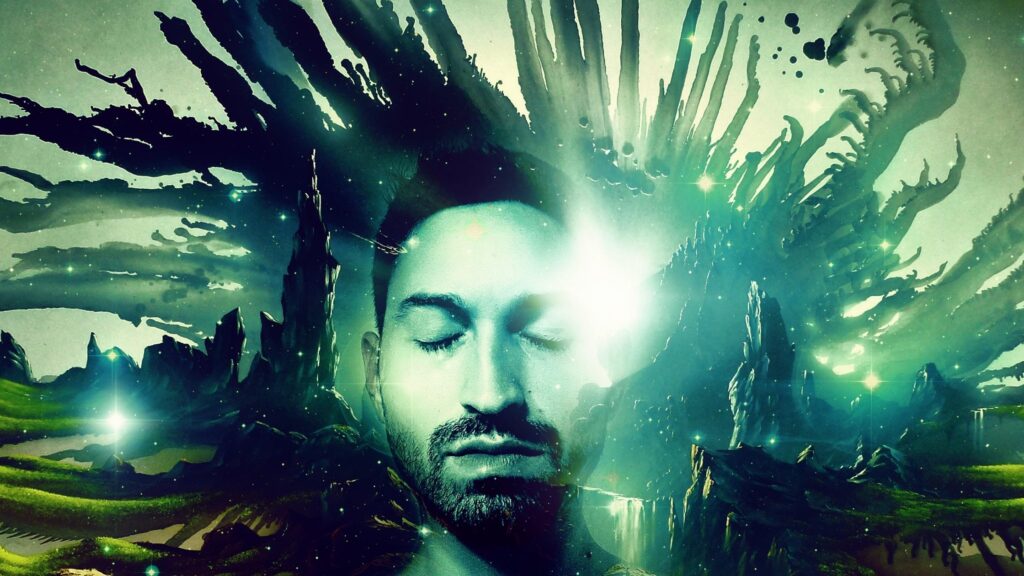
LAW OF ATTRACTION VS LAW OF ASSUMPTION :
Table of Contents
In the vast landscape of personal development and self-improvement, two prominent figures have emerged with their distinct philosophies on the power of man’s consciousness and the ability to manifest desires: Neville Goddard and Esther Hicks. Neville was a prominent teacher during the 30’sright up to the early 70’s. Esther Hicks emerged in the mid 80’s and up to today is still considered one of the world’s leading authorities on the law of attraction.
These two thought leaders have gained a considerable following, each presenting their unique perspective on how individuals can shape their reality. While there is a common thread in their belief that our thoughts and emotions influence the world around us, there are significant differences in their fundamental principles and techniques. So many people have asked me to explain the contrasts between the two and often ask which teacher I would recommend. So, in this comprehensive article, I will delve into the key distinctions between Neville Goddard‘s Law of Assumption and Esther Hicks’ Law of Attraction and more importantly which concept, Law of Attraction or the Law of Assumption I believe will unlock your creative power.
Neville Goddard’s Law of Assumption
” Man, by assuming the feeling of the wish fulfilled, alters his future in harmony with his assumption, for, assumptions though false, if sustained, will harden into fact” Neville Goddard.
Neville Goddard was a mystic and lecturer whose teachings revolved around the concept of the “Law of Assumption.” This law is rooted in the idea that individuals create their reality through their assumptions and beliefs. He teaches that your daily most consistent assumptions are what shapes your experiences and not external forces such as your environment. By consciously assuming the identity of your desired outcome, you objectify its manifestation.
Goddard’s philosophy is a rich tapestry of concepts, but the following are some of the core principles that define his approach:
1. Imagination as the Creative Power:
Look about your immediate environment, everything objective that you can see was first imagined in the mind of an individual. Irrefutable, this principle underpins Goddard’s entire concept. He places great emphasis on the human imagination as the primary creative faculty. In fact, he goes as far as to say that, God and the human imagination are synonymous terms. Goddard encourages individuals to vividly imagine the fulfilment of their desires and to assume the feelings and beliefs associated with that reality. In his view, imagination being the only creative power, is the instrument through which individuals can mould their world.
2. Living in the End:
A central tenet of Goddard’s teachings is the principle of “living in the end.” This involves assuming the feeling of the wish fulfilled and persisting in that assumption until it becomes a tangible reality. It is a practice of living as if the desired outcome has already been achieved. I often say it’s an upgraded and more powerful concept of the “fake it until you make it” method perpetuated by many self-help experts.
3. Revision of Past Events:
Goddard also advocates the practice of revising past events through the power of imagination. By reimagining and revising past experiences, individuals can change the impact of negative memories and experiences on their present and future. He also advocated revision as a means to reprogram any limiting subconscious beliefs that you may currently have.
Esther Hicks’ Law of Attraction

” That which is like unto itself, is drawn. And so, the essence of whatever you give your attention to is unfolding in your experience. Therefore, there is nothing that you cannot be, do, or have. This is Law” ESTHER HICKS.
Esther Hicks, in her teachings of Abraham-Hicks, promotes the “Law of Attraction.” Dating back as far as 6000 years BC This ancient hermetic law is built upon the premise that like attracts like and that individuals can deliberately attract their desires through their thoughts and feelings. Although she is not the first new age philosopher to promote this concept. Esther Hicks’ philosophy is underpinned by a distinct set of principles, including:
1. Thoughts and Vibrations:
The Law of Attraction, as presented by Esther Hicks, centres on the idea that thoughts and emotions emit vibrational frequencies that attract similar vibrations from the universe. Positive thoughts and feelings are believed to attract positive outcomes, while negative thoughts and emotions draw in negative experiences.
2. Emotional Guidance System:
In her #1 New York Times best-selling book “Ask and It Is Given” Hicks introduced the world to the powerful emotional guidance system concept. It was revolutionary at the time and ground-breaking in the self-help industry. Hicks teaches that emotions serve as an internal guidance system. Positive emotions indicate alignment with desires, while negative emotions signal misalignment. She encourages individuals to pay attention to their emotions as a way to gauge their alignment with their goals.
3. Focus on What You Want:
To manifest desires effectively, individuals are advised to focus their thoughts, feelings, and attention on what they want to attract, rather than dwelling on what they don’t want. Hicks emphasizes the power of maintaining a positive and receptive mindset.
Key Differences

Now that we have established the core principles of Neville Goddard‘s Law of Assumption and Esther Hicks’ Law of Attraction, let’s delve into the key differences between these two influential philosophies:
1. Primary Emphasis:
– Neville Goddard’s Law of Assumption: Goddard places primary emphasis on the power of the imagination and the assumption of the desired state. His teachings encourage individuals to vividly Imagine and feel the reality they wish to manifest.
– Esther Hicks‘ Law of Attraction: Esther Hicks’ Law of Attraction centres on thoughts, emotions, and their vibrational frequencies. The primary focus is on maintaining positive thoughts and emotions to align with one’s desires.
2. Time Perspective:
– Neville Goddard’s Law of Assumption: Goddard’s approach involves “living in the end,” which means assuming the feeling of the wish fulfilled, essentially acting as if the desired outcome has already been achieved. His teachings encourage individuals to live in a state of certainty and act accordingly. Goddard teaches that occupying this state internally one will ultimately feel as if their desire is already a fact.
–Esther Hicks‘ Law of Attraction: Hicks’ philosophy does not prescribe a specific time perspective. While the Law of Attraction is primarily focused on the present and future, it does not provide a specific technique for “living in the end” as Goddard does. Rather than feeling that what you want to experience is already yours, hicks emphasis is on focusing on the desire itself.
3. Techniques:
-Neville Goddard’s Law of Assumption:
Goddard’s techniques include the use of imagination, the assumption of the feeling of the wish fulfilled, and the revision of past events. These techniques are aimed at restructuring one’s beliefs and perceptions. He also encourages his students to Imagine outcomes whilst in a lucid state of consciousness similar to a hypnotic state (State Akin Sleep). The efficacy of this super powerful method has proven scientific backing. It has been adopted by hypnotherapist, mindfulness coaches and psychologist just to name a few.
– Esther Hicks’ Law of Attraction:
Hicks’ techniques include visualization, positive affirmations, and maintaining positive emotions, segmenting meditation. These practices are geared towards aligning one’s vibrational frequency with their desires and maintaining a positive emotional state. In fact, in her book “Ask and It Is Given” she outlined 22 proven processes that will improve your point of attraction.
4. Source of Wisdom:
“When the Bible is read in this light you will find it to be the greatest scientific book ever written. Instead of looking at the Bible as the historical record of an ancient civilisation or the unusual life of Jesus, see it as a great psychological drama taking place in the consciousness of man” Neville Goddard
– Neville Goddard’s Law of Assumption: Goddard’s teachings draw from his interpretation of biblical and mystical principles. He often weaves biblical stories and concepts into his lectures and writings. In fact, Neville Goddard is one of few, if any self-help teacher who’s able to competently decipher the psychological mysteries hidden in the bible.
– Esther Hicks’ Law of Attraction: Esther Hicks claims to channel wisdom from a group of non-physical entities known as “Abraham.” Her teachings are presented as messages received from these entities, which are collectively referred to as Abraham.
MY EXPERIENCE WITH BOTH TEACHERS
The philosophies of Neville Goddard’s Law of Assumption and Esther Hicks’ Law of Attraction offer distinct approaches to manifesting desires and creating one’s reality. Both philosophies share a common belief in the power of man’s consciousness and the influence of thoughts and emotions on one’s life experiences. However, the differences in their primary emphases, time perspectives, techniques, and sources of wisdom make each philosophy unique.
My first introduction to the mind over matter concept came many years ago when I first read “The Secret”. I was blown away and instantly fascinated by the idea that, by control of my consciousness I could manipulate my reality. That book I believe was the perfect introduction, however “The Secret” which is heavily influenced by the teachings of Ester Hicks, I felt lacked depth in its practical instruction. In pursuit of further knowledge, I began to read other books by Ester and Jerry Hicks’s: including “Ask and It’s Given” and “The Amazing Power of Deliberate Intent”.
I also enrolled on their course “Teachings of Abraham Master Course”. For two years I persisted with their teachings and experienced sporadic success at best. I found Ester and Jerry Hicks teachings a tad confusing in its application. Also, when it comes to answering those deeper philosophical questions such as “why are here? ” and “what is the phenomena of life?” I felt their answers tended to lack any real wisdom and depth.
It wasn’t until I discovered the teachings of Neville that I was able to experience a real transformation. As I immersed myself in his books and lectures, I felt a real expansion in my consciousness. But probably what was more important was that when it came to manifesting, I was able to see tangible and consistent results. I find Goddard’s emphasis on the power of imagination and living in the end to be more compelling. The idea that every human being is God individualised as that person “you are the creator” just seem to resonate with me in some strange way. And even though he passed away over 50 years ago, there’s a substantial library of lectures, books and audios available to provide any serious student with complete roadmap to enlightenment and empowerment. Consciousness is vast mind-blowing topic, and for a truth seeker who wishes to venture down the “rabbit hole ” as to speak, you’ll find the teachings of Neville Goddard absolutely captivating.
CONCLUSION
Ultimately, the choice between these teachings depends on an individual’s personal preferences and what resonates most with them on their journey toward self-improvement and manifestation., While many may resonate with Hicks’ focus on maintaining positive thoughts and emotions to align with desired outcome, if you are truly goal orientated and want specific targeted results then nothing beats the teachings of Neville Goddard. That being said, regardless of the approach chosen, both philosophies offer valuable insights into the transformative power of the mind and its role in shaping one’s reality.
FOR THOSE LOOKING FOR FURTHER KNOWLEDGE AND RESOURCES AROUND NEVILLES GODDARDS LAW OF ASSUMPTION THEN CHECK OUT THE TRUE COSMIC ACADEMY. THE world’s premier online authority on the Law of Assumption
DISCLOSURE: THIS POST MAY CONTAIN AFFILIATE LINKS. MEANING I GET A COMMISSION IF YOU PURCHASE THROUGH MY LINKS, AT NO COST TO YOU. READ MY DISCLOSURE FOR MORE INFO.








0 Comments